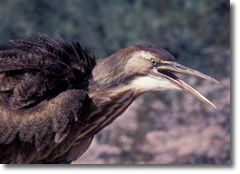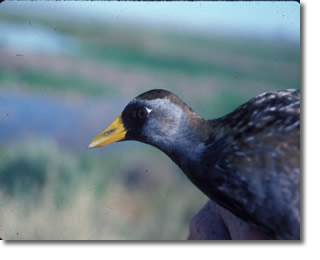Factors influencing detection probability and the benefits of call-broadcast surveys for monitoring marsh birds
Populations of many species of marsh birds are thought to be declining in North America. Despite the perceived population declines, we currently lack an effective monitoring program to estimate population trends of marsh birds. The most commonly-used method to determine presence and abundance of marsh birds in local areas is the broadcast of recorded calls. Understanding the magnitude of benefits and drawbacks associated with call broadcast surveys is essential prior to implementing a continent-wide monitoring program. In this project, we summarized existing information and analyzed data from previous and on-going marsh bird surveys in North America to help evaluate the benefits and drawbacks of call broadcast surveys for monitoring marsh birds. We also summarized intrinsic and extrinsic factors influencing total counts and detection probability of marsh birds. Summary of 36 previous studies provide strong evidence for increased detection probability associated with call broadcast surveys for only 4 species of marsh birds (Soras, Virginia Rails, King Rails, and Limpkins). Evening surveys have proven better in some local studies, whereas morning surveys were better in others, and the effectiveness of morning vs evening surveys may vary seasonally. Vocalization probability appears to be positively correlated with local density in Virginia Rails, Soras, and Clapper Rails, and this presents problems for monitoring. Most studies report a rather rapid decline in new detections over the course of the survey period, and that each species vocalizes most frequently in response to conspecific broadcasts. Movement of birds toward the broadcast source is common and precludes using survey data to estimate local density. We also pooled data from 16,406 survey points from 15 cooperators who provided their data for a pooled analysis to evaluate the usefulness of incorporating call-broadcast surveys into continental monitoring protocols for marsh birds. Analyses of these pooled data suggest that call-broadcast surveys are most effective at increasing detection probability for rails. The proportional increase in mean number of birds detected per survey point on call broadcast surveys compared to passive surveys averaged 43% for Pied-billed Grebe, 260% for Sora, 540% for Virginia Rail, 925% for King Rail, 650% for Clapper Rail, 185% for Black Rail, 103% for Green-backed Heron, 6% for American Bittern, 137% for Least Bittern, 160% for Common Moorhen, and 179% for Marsh Wren. However, duration of call broadcast was longer than duration of the passive period in all but 3 studies. Hence, the average proportional increase in numbers detected on call broadcast surveys is misleading due to unequal survey duration. Call-broadcast does appear to increase detection probability even after controlling for differences in survey duration. The coefficient of variation in numbers counted was slightly lower for call-broadcast surveys compared to passive surveys. We recommend a monitoring protocol that includes an initial passive period followed by a period of call broadcast. This design allows one to take advantage of the benefits while avoiding the drawbacks of both survey methods.




- Erwin, R. M., C. J. Conway, and S. W. Hadden. 2002. Species occurrence of marsh birds at Cape Cod National Seashore, Massachusetts. Northeastern Naturalist 9:1-12.